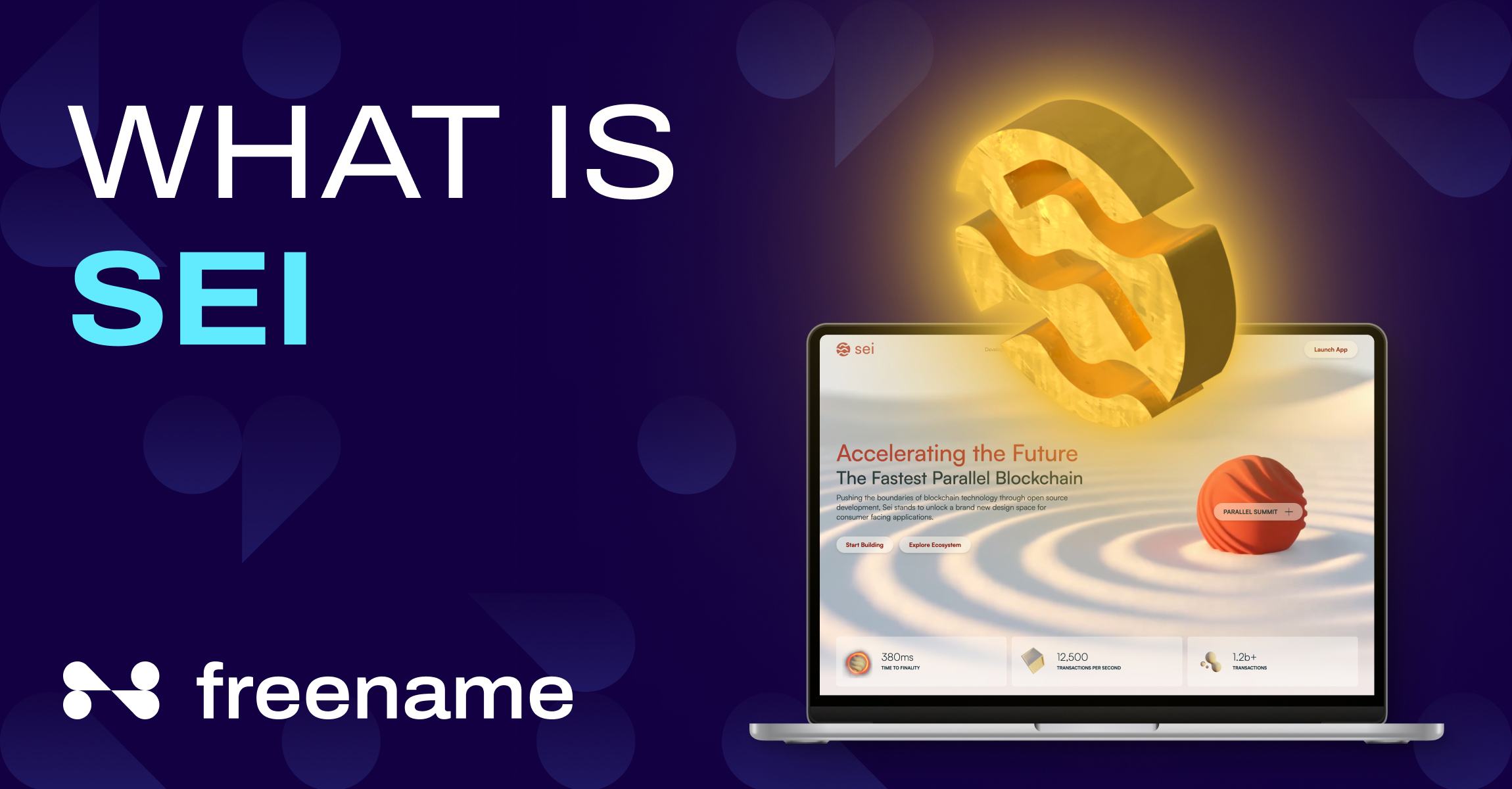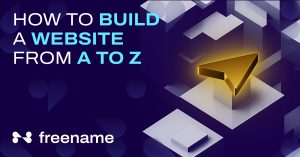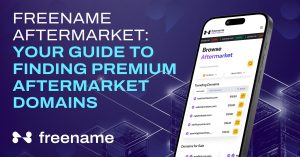SEI is the “first of its kind” parallelized Ethereum Virtual Machine (EVM), combining the best features of Solana and Ethereum. Claiming to be the fastest EVM blockchain ever built, SEI Network offers multiple transaction capabilities and has, so far, completed over 1.2 billion transactions.
SEI v2 aims to accelerate the Ethereum ecosystem by creating a fast-paced environment where users can perform online transactions within milliseconds. It’s an ideal solution for design and development enthusiasts who want to develop consumer-facing dApps.
Eventually, the fastest EVM will make it easier for users to launch more user-centric apps and save gas fees on online transactions.
Below, we look into the SEI’s noteworthy features and other technical aspects that make it an ideal platform for professionals, investors, and other blockchain users.
Technical Overview of SEI Network
SEI was founded by Jayendra Jog and Dan Edlebeck in 2022. The focus was on providing a reliable, secure, and high-speed blockchain network. Initially, they launched a Seinami Incentivized Testnet, Atlantic-1, in July 2022. An upgraded Testnet version called Atlantic-2 was introduced in March 2023.
After the launch of Atlantic-2, SEI launched its public beta, Pacific-1 mainnet, in August 2023. Meanwhile, SEI continued to evolve as new developments occurred.
For example, SEI v2, launched at the end of March 2024, introduced major innovations, making the blockchain more dynamic, interoperable, and user-friendly.
These include:
- Twin Turbo Consensus mechanism: SEI’s dynamic consensus mechanism helps shorten the time to finality (TFF) to under 400 milliseconds. The Twin Turbo Consensus mechanism may be a breakthrough in Web3’s evolution as it renders a Web2-like experience.
- Interoperable EVM: The upgraded version enables Ethereum developers to deploy native dApps. They can also deploy tools and infrastructure to SEI without modification. Thanks to the innovative EVM and non-EVM contracts, the SEI EVM offers 100x performance improvement.
- Optimistic Parallelization: The blockchain offers parallel transaction processing instead of sequential processing. The optimistic parallelization skips the sorting phase and proceeds to process transactions simultaneously. It treats every transaction independently and returns to adjust incorrect transactions. This approach optimizes resource utilization, handling multiple transactions simultaneously and speeding up transaction processing across the network nodes and subgroups. It helps developers unlock parallel processing to deploy Etherum-powered applications on the SEI chain without any additional work.
- SeiDB: Arguably a ground-breaking technology, SeiDB can store, read, and write data at a much higher rate than the previous version. This database goes beyond conventional data storage, which, with the passage of time, results in slower overall transaction processing speed. Instead, SeiDB decouples the data into State Commitment (SC) and State Storage (SS) layers, which eventually improves state syncing times and read/write amplification.
Twin-Turbo consensus is a modified Tendermint consensus mechanism used by SEI blockchain to develop its Proof-of-Stake (PoS) protocol. The highlights:
- A combination of intelligent block propagation and optimistic block processing improves the throughput by 83%
- Enables the SEI network to maintain the fastest time to finality (TFF) at 400 milliseconds and deliver an application experience similar to the Web2 space.
Twin Turbo consensus comprises of two parts:
- Optimistic Block Processing
Blockchain validators leverage optimistic block processing (in other words, optimistic parallelization) for faster validation and voting. As compared to blockchains that rely on non-optimistic block processing, this technique benefits SEI in:
- Increasing throughput speed by up to 33%
- Processing up to 22,000 orders per second with TFF under 400ms.
- Reducing the overall block time by 33% with reported block times under 300ms.
- Intelligent Block Propagation
Conventional Cosmos SDK-powered chains offer validators a structured three-phase process involving BeginBlock, DeliverTx, and EndBlock. SEI replaced the second and third phases with parallel processing, increasing the overall throughput by up to 40%.
Intelligent block propagation lets block proposers send compressed block proposals. Instead of unnecessary details (that may hinder processing time), these proposals contain only transaction hashes.
In most cases, upon receiving compressed block proposals, validators can use data from transactions stored in the local mempool to reconstruct original blocks. Otherwise, they can revert it and wait for the detailed proposal to arrive. This allows SEI to reduce the overall throughput speed.
Twin-Turbo Consensus Benefits
Block time speed, TFF, and latency time are crucial for decentralized exchanges (DEXes) that use orderbooks. After each block, marker makers have to update their prices. A delay longer than a few hundred milliseconds poses a huge risk.
Moreover, in a standard L1 chain, block times can go up to 6 seconds, making it virtually impractical for DEXes to operate. This is where SEI, with its Twin-Turbo consensus, can aid them with shorter block times, resulting in:
- Smaller price updates
- Tighter price spreads
- Reduced risk
Smart Contract Functionality
SEI aids in smart contract development, offering compatibility with EVM and CosmWasm. This means developers:
- Have access to a broad range of dApps, and
- They can enjoy interoperability between the two ecosystems.
That said, each of these approaches has benefits and tradeoffs. Ultimately, it depends on the user’s competence, specific requirements, and, more importantly, the nature of the project. Here is a quick comparison of EVM and CosmWasm to help you get started.
| EVM | CosmWasm | |
| Overview | It allows the execution of smart contracts on Ethereum and EVM-compatible blockchains. EVM contracts are typically written in Solidity, an Ethereum-designed language. | Built for the Cosmos ecosystem, this smart contract platform enables contracts to be written in WebAssembly (Wasm) languages, with Rust being the most commonly used. |
| Benefits | EVM is by far the most widely supported. It allows for the use of existing Ethereum tools, libraries, and wallets (such as MetaMask). Porting existing Ethereum dApps to the Sei blockchain is effortless.It offers a large Ethereum developer community with extensive resources, tutorials, and libraries. | CosmWasm supports multiple programming languages that are compiled with Wasm.Its architecture encourages modular contract design for easier upgradation and maintenance.It seamlessly integrates with other Cosmos chains.Users can leverage the extensive Cosmos ecosystem and its IBC (Inter-Blockchain Communication) protocol. |
| Considerations | Solidity is robust but has a steeper learning curve than other languages. | You need to be familiar with Rust or other Wasm-supported languages.The CosmWasm ecosystem is still smaller than Ethereum’s. |
| Use Cases | Projects requiring compatibility with existing Ethereum infrastructure.Developers with a background in Ethereum development.Applications benefiting from Ethereum’s mature tooling and ecosystem. | Projects requiring high performance and security.Applications benefiting from Cosmos features and interoperability.Developers with a background in Rust or other Wasm-supported languages. |
| Examples | MetaMask: Popular Ethereum walletHardhat: Development environment for Ethereum.Foundry: Ethereum development toolkitRemix: IDE helps build Ethereum contractsWagmi: React hooks library for Ethereum dApps. | CosmWasm: Smart contracts development platform.CosmosKit: Library for connecting to Cosmos wallets.CosmJS: JavaScript library for interacting with Cosmos blockchains.@sei-js: Typescript library for interacting with Sei. |
Seamless Deployment and Compatibility Across EVM and Non-EVM Contracts
SEI follows backward compatibility that aids in a quick and effortless deployment of EVM-compatible smart contracts. On SEI, users can deploy existing smart contracts across all EVM-compatible chains. The backwards compatibility feature eliminates code changes. Moreover, users can leverage Remix, Hardhat, Foundry, etc., to modify and execute the codes in real-time.
- For EVM transactions: In the SEI v2, network nodes can handle Ethereum transactions with the help of Geth (Go implementation of the Ethereum Virtual Machine). Users will get subsequent updates on the SEI’s specialized interface.
- For non-EVM contracts: SEI supports non-EVM transactions via its specialized interface.
Deploying Smart Contracts Using EVM
As we know, Sei is EVM-compatible, which means you can deploy smart contracts using Hardhat and Foundry. Moreover, you need to be familiar with EVM-compatible languages, such as Solidty and Vyper. Also, ensure you have sufficient funds in an SEI-compatible wallet, e.g., MetaMask.
Follow these quick steps:
- Choose and install the EVM-compatible tool and create a new project.
- You may need to tweak the contract code with specified commands.
- After tweaking the code, test it with the platform’s assigned commands.
- After passing the test, use a specified command to deploy the contract on the SEI network.
- After successful deployment, you will get the EVM contract address.
Below, you’ll find out how to deploy a smart contract on EVM using Foundry. For this purpose, we’re using Solidity language.
Step 1:
After installing the Foundry, create a new project.
Step 2:
Add the “getCounter” function to your contract code:
// SPDX-License-Identifier: UNLICENSED
pragma solidity ^0.8.13;
contract Counter {
uint256 public number;
function setNumber(uint256 newNumber) public {
number = newNumber;
}
function increment() public {
Number++;
}
function getCount() public view returns (uint256) {
return number;
}
}
Step 3:
After this, test the code as follows:
// SPDX-License-Identifier: UNLICENSED
pragma solidity ^0.8.13;
import {Test, console} from “forge-std/Test.sol”;
import {Counter} from “../src/Counter.sol”;
contract CounterTest is Test {
Counter public counter;
function setUp() public {
counter = new Counter();
counter.setNumber(0);
}
function test_Increment() public {
counter.increment();
assertEq(counter.number(), 1);
}
function testFuzz_SetNumber(uint256 x) public {
counter.setNumber(x);
assertEq(counter.number(), x);
}
function test_GetCount() public {
uint256 initialCount = counter.getCount();
counter.increment();
assertEq(counter.getCount(), initialCount + 1);
}
}
Step 4:
Now, use the command “$ forge test” to run the test.
Step 5:
After passing the test, go on to deploy the contract on the SEI network. You need to run the following command:
$ forge create –rpc-url $SEI_NODE_URI –mnemonic $MNEMONIC src/Counter.sol:Counter
Things to remember
- $MNEMONIC: mnemonic of the account that will execute the contract.
- $SEI_NODE_URI: URI of the SEI node
- If you run a local SEI node, you will get the address http://localhost:8545.
- If non-local SEI nodes were run: you have to get an evm_rpc URL from the chain registry.
Deploying CosmWasm Smart Contracts
As mentioned earlier, CosmWasm utilizes Rust programming language to write smart contracts. Rust is a high-performance and memory-efficient language. Its rich-type system helps easily remove bugs. Moreover, its top-notch tooling, integrated package manager, editing and formatting support make it a go-to documentation language.
Now, let’s understand the contract deployment step.
Step 1:
Install the necessary tools. For example, you may need the latest version of Rust and Cargo from Rustup.rs. Also, install Cargo Generate and run the following script:
cargo install cargo-generate –features vendored-openssl
cargo install cargo-run-script
Step 2:
Create a new project and go to the folder where you want to place it. After that, run the following script:
cargo generate –git https://github.com/CosmWasm/cw-template.git –name counter
Step 3:
The system will ask you, “Would you like to generate the minimal template?” Press “False.” This will generate a “counter” contract project. Its source code will be inside the folder, and its name will be the same as the folder’s name.
Step 4:
When you’re inside the project, open “Cargo.toml”. This will allow you to remove unwanted features. For example, you will find the following script:
cosmwasm-std = { version = “2.0.1”, features = [
“Cosmwasm_1_3”,
# Enable this if you only deploy to chains that have CosmWasm 1.4 or higher # “cosmwasm_1_4”,
] }
Change this line to cosmwasm-std = “2.0.0”
Step 5:
Ensure that the code is intact. So, run a test by using the command: cargo test. The result should look like this:
Finished test [unoptimized + debuginfo] target(s) in 0.09s
Running unittests src/lib.rs (target/debug/deps/c3-777d376b6d32a663)
running 4 tests
test contract::tests::proper_initialization … ok
test contract::tests::increment … ok
test contract::tests::reset … ok
test integration_tests::tests::count::count … ok
test result: ok. 4 passed; 0 failed; 0 ignored; 0 measured; 0 filtered out; finished in 0.00s
Running unittests src/bin/schema.rs (target/debug/deps/schema-283e665754e86143)
running 0 tests
test result: ok. 0 passed; 0 failed; 0 ignored; 0 measured; 0 filtered out; finished in 0.00s
Doc-tests c3
running 0 tests
test result: ok. 0 passed; 0 failed; 0 ignored; 0 measured; 0 filtered out; finished in 0.00s
Step 6:
Now, before deploying the smart contract, you have to optimize it to occupy the least amount of space on the SEI blockchain. This will result in reduced gas fees.
The above project already has a command that you can use to optimize your contract. You just need to change it a little.
This is the system-generated command:
# Catgo.toml
[package.metadata.scripts]
optimize = “””docker run –rm -v “$(pwd)”:/code \
–mount type=volume,source=”$(basename “$(pwd)”)_cache”,target=/target \
–mount type=volume,source=registry_cache,target=/usr/local/cargo/registry \
cosmwasm/optimizer:0.15.0
“””
So, just invoke the building and optimization by running this script: $ cargo run-script optimize
Step 7:
After successfully executing this command, go to artifact directory to find your wasm artifact. You can also utilize the cosmwasm-check command to verify that your command ran successfully.
$ cosmwasm-check artifacts/counter.wasm
Available capabilities: {“stargate”, “cosmwasm_1_1”, “cosmwasm_1_3”, “cosmwasm_2_0”, “cosmwasm_1_4”, “iterator”, “cosmwasm_1_2”, “staking”} artifacts/counter.wasm: pass
All contracts (1) passed checks!
Step 8:
Now deploy your contract to the SEI network (Here, we’re using Atlantic-2) using the following script:
$ seid tx wasm store artifacts/counter.wasm –from $SEI_WALLET_ADDRESS –node https://rpc-testnet.sei-apis.com –chain-id atlantic-2 -b block –fees=200000usei –gas=2000000
Note the code in events:
– events:
– attributes:
– key: action
value: /cosmwasm.wasm.v1.MsgStoreCode
– key: module
value: wasm
– key: sender
value:
type: message
– attributes:
– key: code_id
value: “8363” <— Code ID
type: store_code
log: “”
msg_index: 0
Step 9:
Use this command to Initiate the contract:
$ seid tx wasm instantiate 8363 ‘{“count”:1}’ -y –no-admin –label counter –from $SEI_WALLET_ADDRESS –node https://rpc-testnet.sei-apis.com –chain-id atlantic-2 -b block –fees=40000usei –gas=2000000
Step 10:
You can now query the contract.
$ seid q wasm contract-state smart $CONTRACT_ADDRESS ‘{“get_count”: {}}’ –node https://rpc-testnet.sei-apis.com
You should get the following response:
data:
count: 1
Step 11:
Call increment function:
$ seid tx wasm execute $CONTRACT_ADDRESS ‘{“increment”: {}}’ –from $SEI_WALLET_ADDRESS –node https://rpc-testnet.sei-apis.com –chain-id atlantic-2 -b block –fees=4000usei
If successful, the output should look like this:
data:
count: 2
Key Features of SEI Network
In the modern era, features like speed, efficiency, scalability, security, and interoperability are crucial for the sustainable growth of any blockchain network. Let’s examine these features and see if SEI is a worthwhile option.
Speed and Efficiency
Transaction speed and processing efficiency are essential in determining any blockchain’s growth and success. The two key metrics associated with transaction speed and processing efficiency include:
- Transaction Time to Finality (TTF) reflects the entire timeline for a blockchain transaction from submission to confirmation (the point at which it cannot be reversed or tempered).
- Transactions per second (TPS) shows the number of transactions taking place in one second.
A low TTF indicates fewer transaction delays. For example, if an end-user can build a DeFi app on SEI in the shortest possible time or tokens appear in their digital wallet after trading via a DEX, the blockchain is suitable.
Currently, SEI’s TTF is under 400 milliseconds. It can fulfill up to 22,000 orders per second with a theoretical TPS of 12,500. So, is SEI better than Solana, Ethereum, or other blockchains? The following blockchain comparison will tell you more.
| Blockchains | Recorded TPS | Theoretical TPS | Block Time | Time to Finality |
| SEI | 22,000 (ops) | 12,500 | 0.41s | 0.38s |
| Solana | 7,229 | 65,000 | 0.42s | 12.8s |
| Ethereum | 62.34 | 119 | 12.12s | 16m |
| Polygon | 429 | 649 | 2.17s | 4m 16s |
| Bitcoin | 13.2 | 7 | 6m 39s | 1h |
| BNB Chain | 1,731 | 2,222 | 3.01s | 7.5s |
| Avalanche | 92.74 | 357 | 2.04 | 1s |
| Cardano | 11.62 | 18.02 | 20.08s | 2m |
| Polkadot | 112 | 1,500 | 6.03s | 1m |
In the above table, several distinctions set SEI apart. For example:
SEI’s parallelized EVM combines Solana’s speed and scalability with Ethereum’s most reliable and compatible ecosystem. This combination enables SEI to:
- Process transactions at rocket speed
- Leverage tools and resources from a massive pool of the Ethereum ecosystem
Solana is renowned for its low-cost and high-speed transactions, but SEI’s Twin-Turbo consensus mechanism is a step ahead with more efficient transaction processing.
Scalability
A blockchain’s scalability relies on its ability to:
- Accommodate large transaction volumes,
- Keep transaction speeds consistent,
- Keep transaction fees affordable
SEI v2 checks these boxes by implementing the latest technologies, such as SeiDB, Interoperable EVM, and Twin-Turbo consensus mechanism.
For example,
- SEI v2 has transitioned to PebbleDB with enhanced read-write capability. The database supports multi-thread access.
- SEI labs built Native Order Matching directly into Layer 1 for seamless order execution. This feature makes SEI a scalable solution, especially for DEXes.
All these implementations ensure that the blockchain can handle the growing demands of worldwide users. They can execute existing and new projects without congestion, preventing them from paying high gas fees.
Security Measures
SEI follows a Proof-of-Stake (PoS) protocol, which is more reliable than the PoW security paradigm. This allows delegators and validators to earn SEI tokens for staking and supporting their consensus mechanism. The ecosystem enables validators and delegators to participate in staking, thereby contributing to the network’s security, longevity, and consistent performance.
Delegators are token holders who stake their tokens to validators. This, in turn, helps validators increase their stakes on the network. Even after delegating, delegators are still in control of their tokens. Tokens cannot be traded freely without the delegator’s consent.
On the other hand, validators have a bigger responsibility of securing and managing these stakes. They are responsible for creating new blocks and validating transactions. They must also participate in Governance and decision-making, shaping the network’s future.
Validators are required to meet strict standards and constantly monitor the consensus process. A validator has to implement best security practices to prevent the risk of data breaches, online thefts, and DDoS attacks.
For example, a validator should use HSM (Hardware Security Modules) to manage their private keys. For optimum security, they can leverage a multi-party-computation (MPC) signing service, such as Horcrux.
Apart from general security, SEI network validators also contribute to making this platform decentralized and transparent through voting and constant feedback. For example, validators leverage the Oracle Price Feeder to help the network set asset prices. SEI uses native price oracles that offer maximum protection against malware.
Interoperability
SEI operates as an integrated blockchain, ensuring seamlessness between:
- Bank
- EVM
- Wasm
- Staking
Although different in nature, these transactions have some common aspects, such as transaction body, sender, and gas. When received, the SEI chain directs these transactions to their relevant storage sections.
So, a CosmWasm transaction goes to the Wasm module for further processing. This allows developers to leverage native tokens and enjoy other chain functionalities, such as staking or trading.
As SEI v2 offers dual support to CosmWasm and EVM, the contracts on these platforms can coexist. That said, their execution environments are different. To ensure this interoperability, SEI offers two features:
- Precompiled contracts: These smart contracts are embedded within the SEI blockchain. Users can access native SEI functionalities with the help of the EVM RPC interface.
- Pointer contracts: These contracts have unique features. For example, they are used to create links between EVM and CosmWasm tokens. Linking allows a smooth flow of tokens between both environments. You can deploy pointer contracts for various token standards using the Seid CLI tool.
Applications and Use Cases
Decentralized Finance (DeFi)
SEI v2 aims to build a platform where users can build and interact with user-facing apps just like they do in the Web2 space. The interoperable EVM, which is backed by a powerful consensus mechanism and database, attracts developers to build different types of applications, especially DeFi applications.
Some examples of popular DeFi projects on the SEI network include:
- Dragonswap: It is a decentralized, permissionless Automated Market-maker Decentralized Exchange (AMM DEX). Dragonswap has a user-friendly interface. It leverages SEI’s trademark TTF for precisely accurate block pricing.
- Silo: The Silo Finance App is about liquid staking, built on the SEI chain. Users can stake their SEI tokens to secure the network. This app lets you benefit from auto-compounding yield.
Non-Fungible Tokens (NFTs)
SEI Network is built to exchange digital assets seamlessly across multiple blockchains. NFTs are highly tradable digital assets because of the ease of exchange. NFTs are dynamic in nature and SEI’s functionalities and features are perfectly aligned to cater to NFT trading.
For example, Pallet Exchange is a popular native NFT trading platform built on SEI. It is arguably one of the fastest-growing marketplaces, with hundreds of NFTs in its collection.
Enterprise Solutions
As we saw above, the SEI network offers robust blockchain solutions for DeFi and DEX applications. Its smart contracts and applications allow other businesses to use its functionalities effectively.
Developers can leverage SEI’s multi-chain approach to build applications for different purposes. They can also develop universal applications that allow accessibility across Ethereum and Solana chains while keeping the gas fees within budget. Moreover, its low latency and high throughput can help build a reliable business.
SEI blockchain’s solutions can be implemented across various sectors, including:
- Supply chain
- Healthcare
- Finance
- Education
- Research and development
- Data management, etc.
Industries benefit from seamless integration with existing systems, enabling real-time data tracking and automation of complex processes. This not only drives operational efficiency but also fosters trust and innovation, positioning companies to stay competitive in a rapidly evolving digital landscape.
Challenges and Future Prospects
The SEI network offers many attractive benefits, including scalability, robust liquidity support, enhanced security, interoperability, rapid processing, and high throughput. However, there are some limitations. Take optimistic processing, for instance.
A failed block proposal can halt the optimistic processing for other blocks with the same block height. Like this, there are a number of issues to be addressed:
- Network congestion: This issue may arise during periods when the network performs at its optimum. It may lead to higher transaction fees and slower TFF.
- Scalability: This issue often troubles even bigger blockchains, especially when they’re growing – or – the number of transactions increases.
- Adoption barriers: As the network grows, users will face adoption barriers due to a lack of understanding. Some users may be reluctant to switch to SEI.
- Complexity: SEI has many advanced features and capabilities that may prove complex to developers. Some developers may need specialized knowledge to explore this network’s full potential.
Future Developments
Considering the advanced features and scalability of SEI, it is likely to grow bigger and become more robust in nature. The network must keep educating the masses for seamless onboarding.
- DeFi growth: We may see more DeFi applications emerging. For example, lending platforms and DEXs.
- Enterprise use: With the expansion of the SEI’s developers community, we could see more transparent and user-friendly blockchain solutions tailored for various sectors, such as healthcare, supply chain, data security, and more.
- Cross-Chain integration: SEI is working on seamless asset transfers across blockchains. So, in the future, there will be more innovative dApps and DeFi solutions with multi-chain support on the market.
- Asset Tokenization: SEI could facilitate the tokenization of assets like real estate, making investments more accessible.
- Decentralized Governance: SEI’s future might include more community-driven governance, enhancing trust and sustainability.
Conclusion
The launch of SEI v2 has certainly revolutionized the blockchain’s overall infrastructure, making SEI more robust and quick. It offers an advanced consensus mechanism, an interoperable EVM that supports CosmWasm and Ethereum, and a modified database. These features make SEI a high-performance network with enhanced security and scalability.
Unlike other chains, SEI is tailored for DeFi applications that rely on quick TTF to finalize blocks. It is ideal for market makers and liquid staking applications. Not only that, but it offers a plethora of Ethereum-powered applications, not to mention the capability to effortlessly deploy existing or new smart contracts on chain.
SEI blockchain is still evolving and offers opportunities to aspiring developers, investors, traders, and aspiring blockchain enthusiasts to explore its promising features. So, don’t waste this opportunity to leverage SEI and open doors to success!







